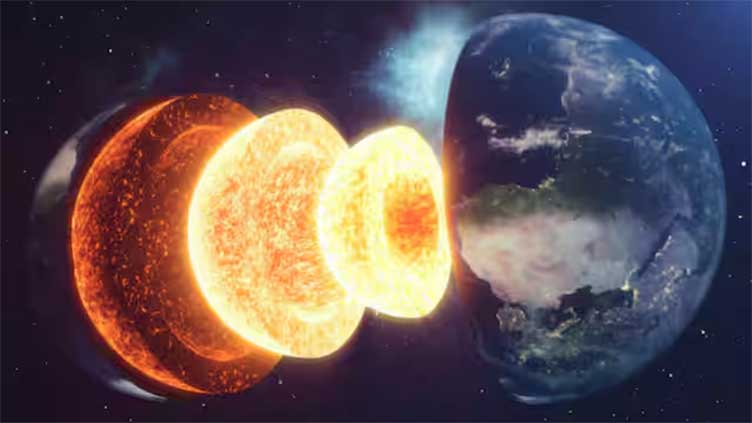Sun is slowly penetrating, changing Earth's core

Technology
Here is how
(Web Desk) - The rays of the Sun are not just impacting humans and the surface of the Earth, but also penetrating deep within the Earth and making changes in its core, as per a new study.
In a new paper, which was published in the journal Nature Communications, scientists explained how the ancient magma present inside the Earth's core has some chemical properties that show it is being impacted by the Sun's rays.
The Sun's rays impact Earth's core when the dead marine life gets transported into the interior of the Earth and changes the magma's "redox" state.
The Sun has been heavily influencing the marine life around the world which has depended on its energy and warmth.
Because of the variety in solar radiation across the surface of the planet, marine life remains differently distributed in the fossil record.
After a wide span of time, these dead organisms reach into the magma-filled mantle of the Earth through the process called subduction, in which one plate of the crust of the Earth slowly gets sucked beneath another plate.
The paper suggested that the presence of these marine creatures in the magma is affecting the arc magma's "redox" state in which a balance is created between oxidised and reduced forms of molecules.
The researchers explained that the redox state of magma showed a gradient with latitude, which further explained how marine creatures are reducing the magma and the Sun is changing Earth's core.
"Previous studies mainly compared samples from the same longitudinal regions, such as the U.S. in the northern hemisphere and Mexico in the tropical zone, without finding significant differences.
However, our samples from different latitudes showed varying redox responses, which piqued our curiosity. Trying to explain these differences led us to discover this unexpected pattern," said study author Wan Bo, who is a geologist at the Chinese Academy of Sciences, in a statement.
"This unexpected pattern suggests that the surface climate has a direct influence on the deep Earth. It also suggests that the Earth's surface environment and climate have a vital influence on the deep Earth," Wan added.
The scientists also found more carbon deposits present on the seafloor at lower latitudes which have been interacting with sulfur and becoming sulfides. This is also suspected to have contributed to the redox of the magma.
"The observed pattern suggests a strong link between the surface environment and the redox state of the deep Earth, providing new directions for exploring the resources and environmental impacts of subduction systems at different latitudes," said Hu Fangyang, who is a researcher at the Chinese Academy of Sciences.


